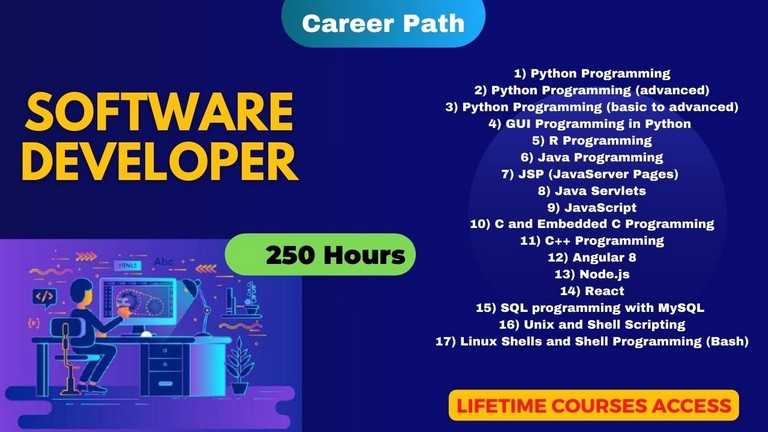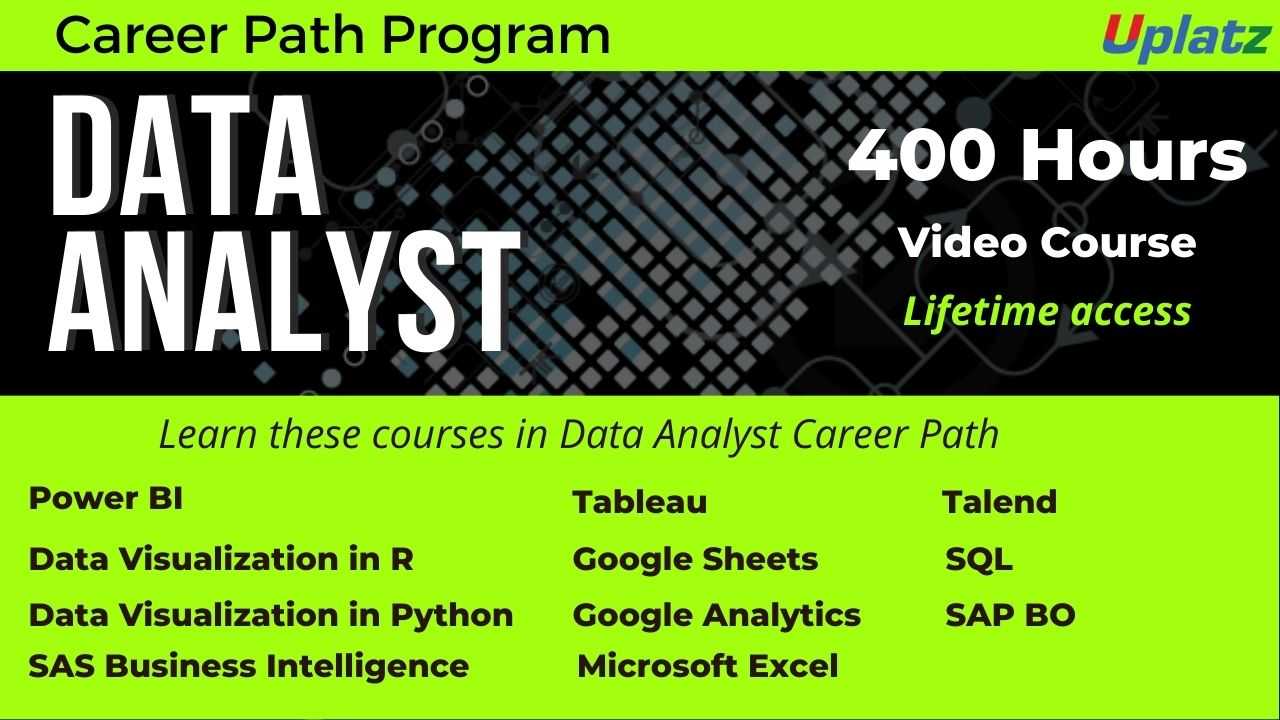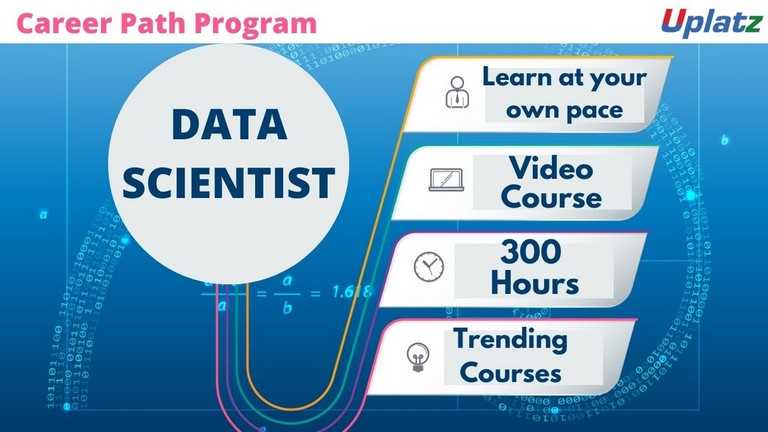SQL Programming with Microsoft SQL Server
Learn SQL Programming, Database Management, Query Optimization, Data Analysis, Stored Procedures, Dynamic Queries, Exception Handling on MS SQL ServerPreview SQL Programming with Microsoft SQL Server course
Price Match Guarantee Full Lifetime Access Access on any Device Technical Support Secure Checkout Course Completion Certificate 94% Started a new career
BUY THIS COURSE (
94% Started a new career
BUY THIS COURSE (GBP 12 GBP 29 )-
 98% Got a pay increase and promotion
98% Got a pay increase and promotion
Students also bought -
-

- Career Path - Software Developer
- 250 Hours
- GBP 32
- 3679 Learners
-

- Career Path - Data Analyst
- 400 Hours
- GBP 32
- 6488 Learners
-

- Career Path - Data Scientist
- 300 Hours
- GBP 32
- 6978 Learners

SQL Programming on Microsoft SQL Server involves learning how to effectively use Structured Query Language (SQL) to interact with and manage data stored in Microsoft SQL Server databases. SQL is widely used across various industries for managing, analyzing, and manipulating data stored in relational database management systems (RDBMS). Its versatility and power make it a fundamental tool for businesses in numerous sectors. Here's how SQL programming is utilized across different industries:
1. Finance and Banking: In the finance industry, SQL is extensively used for managing large volumes of transactional data, performing complex queries for financial analysis, generating reports, and ensuring compliance with regulatory requirements such as AML and KYC.
2. Healthcare: Healthcare organizations rely on SQL for managing patient records, tracking medical procedures, scheduling appointments, and analyzing clinical data. SQL databases are crucial for electronic health record (EHR) systems, medical billing, and medical research.
3 Retail and E-commerce: Retailers use SQL to manage inventory, track sales data, analyze customer behavior, and generate insights for marketing campaigns and product recommendations. E-commerce platforms utilize SQL for managing product catalogs, processing orders, and tracking customer interactions.
4. Manufacturing and Supply Chain: In manufacturing, SQL databases are used for inventory management, production planning, quality control, and supply chain optimization.
5. Telecommunications: Telecommunication companies rely on SQL for managing subscriber data, billing information, network performance monitoring, and analyzing call records.
6. Technology and Software Development: SQL databases underpin many software applications, including enterprise resource planning (ERP) systems, customer relationship management (CRM) software, and content management systems (CMS). SQL is used for data storage, retrieval, and manipulation in software development projects.
7. Media and Entertainment: Media companies leverage SQL for managing content libraries, audience data, advertising campaigns, and subscription services.
SQL programming plays a crucial role in enabling data-driven decision-making, improving operational efficiency, and facilitating business intelligence across a wide range of industries. Its ability to handle large datasets, perform complex queries, and ensure data integrity makes it indispensable for modern organizations striving to leverage data as a strategic asset.
This comprehensive SQL Programming with MS SQL Server course by Uplatz covers a wide range of topics, empowering participants with the knowledge and skills needed to become proficient SQL developers and database administrators. By the end of the course, participants will be well-equipped to leverage Microsoft SQL Server effectively for database management, data analysis, and application development. Key features of this SQL course are:
1. Database Fundamentals: Understand the foundational concepts of relational databases, including tables, rows, columns, primary keys, foreign keys, and normalization principles.
2. SQL Basics: Master the fundamentals of SQL syntax, including querying data using SELECT statements, filtering and sorting results, and performing basic data manipulation operations (INSERT, UPDATE, DELETE).
3. Data Retrieval: Learn advanced SQL querying techniques to retrieve specific data from one or multiple tables using JOIN operations, subqueries, and common table expressions (CTEs).
4. Data Modification: Gain expertise in modifying data within SQL Server databases, including inserting new records, updating existing data, and deleting unwanted data while ensuring data integrity.
5. Database Design: Explore best practices for designing efficient and scalable database schemas, including creating tables, defining constraints, and optimizing indexes for performance.
6. Stored Procedures and Functions: Develop proficiency in writing stored procedures and user-defined functions to encapsulate business logic, improve code reusability, and enhance database security.
7. Transaction Management: Understand transaction management concepts in SQL Server, including ACID properties, transaction isolation levels, and managing transactions using BEGIN TRANSACTION, COMMIT, and ROLLBACK statements.
8. Query Optimization: Learn techniques for optimizing SQL queries to improve performance, including using indexes effectively, optimizing execution plans, and avoiding common performance pitfalls.
9. Error Handling and Debugging: Master error handling techniques in SQL Server, including using TRY...CATCH blocks to handle exceptions and logging error information for troubleshooting purposes.
10. Advanced Topics: Explore advanced SQL Server features and capabilities, such as window functions, common table expressions, temporal tables, JSON support, and dynamic SQL.
Course/Topic - SQL Programming with Microsoft SQL Server - all lectures
-
Lecture 1.1 - Introduction to Microsoft SQL Server
-
Lecture 1.2 - Introduction to Microsoft SQL Server
-
Lecture 1.3 - Introduction to Microsoft SQL Server
-
Lecture 2.1 - Select and Where
-
Lecture 2.2 - Select and Where
-
Lecture 2.3 - Select and Where
-
Lecture 3.1 - SQL Sub Languages - Order By Clauses
-
Lecture 3.2 - SQL Sub Languages - Order By Clauses
-
Lecture 4.1 - Any - All - Select Into - Insert Into - Case
-
Lecture 4.2 - Any - All - Select Into - Insert Into - Case
-
Lecture 5.1 - Delete - Top - Aggregate Functions - Wild Cards
-
Lecture 5.2 - Delete - Top - Aggregate Functions - Wild Cards
-
Lecture 6.1 - Insert - Update - Is Null Commands
-
Lecture 6.2 - Insert - Update - Is Null Commands
-
Lecture 6.3 - Insert - Update - Is Null Commands
-
Lecture 7.1 - In - Between - Table Alias
-
Lecture 7.2 - In - Between - Table Alias
-
Lecture 8.1 - SQL Comments - SQL Operators
-
Lecture 8.2 - SQL Comments - SQL Operators
-
Lecture 9.1 - Joins
-
Lecture 9.2 - Joins
-
Lecture 10.1 - Union All - Union - Group By - Having - Exists - Not Exists
-
Lecture 10.2 - Union All - Union - Group By - Having - Exists - Not Exists
-
Lecture 11.1 - Null Functions - Transact SQL
-
Lecture 11.2 - Null Functions - Transact SQL
-
Lecture 12.1 - Examples - If - Conditional Statements
-
Lecture 12.2 - Examples - If - Conditional Statements
-
Lecture 13.1 - Goto Statement - Looping Construct
-
Lecture 13.2 - Goto Statement - Looping Construct
-
Lecture 14.1 - Sub Programs - Stored Procedures
-
Lecture 14.2 - Sub Programs - Stored Procedures
-
Lecture 15.1 - Stored Procedure Examples
-
Lecture 15.2 - Stored Procedure Examples
-
Lecture 16.1 - Modifying and Dropping a Stored Procedure
-
Lecture 16.2 - Modifying and Dropping a Stored Procedure
-
Lecture 17.1 - Dynamic Queries - Procedure Returning Values - Functions
-
Lecture 17.2 - Dynamic Queries - Procedure Returning Values - Functions
-
Lecture 18.1 - Break - Continue - Exception Handling
-
Lecture 18.2 - Break - Continue - Exception Handling
-
Lecture 19.1 - Structured Exception Handling
-
Lecture 19.2 - Structured Exception Handling
-
Lecture 20.1 - Multiple and Nested Try Catch Blocks
-
Lecture 20.2 - Multiple and Nested Try Catch Blocks
-
Lecture 21.1 - Using Anonymous Block - Table Valued Functions
-
Lecture 21.2 - Using Anonymous Block - Table Valued Functions
-
Lecture 22.1 - Backup DB - Differential Example - DDL Statements
-
Lecture 22.2 - Backup DB - Differential Example - DDL Statements
-
Lecture 23.1 - User Defined DB - Creating DB with GUI - Query - Commands
-
Lecture 23.2 - User Defined DB - Creating DB with GUI - Query - Commands
-
Lecture 24.1 - Database Constraints and Domain Integrity Constraints
-
Lecture 24.2 - Database Constraints and Domain Integrity Constraints
-
Lecture 25.1 - Primary Key and Composite Key
-
Lecture 25.2 - Primary Key and Composite Key
-
Lecture 26.1 - Creating 1-to-1 Relationship - Indexes
-
Lecture 26.2 - Creating 1-to-1 Relationship - Indexes
-
Lecture 27.1 - Views and Types of Views
-
Lecture 27.2 - Views and Types of Views
-
Lecture 28.1 - Auto Increment - SQL Date Operations
-
Lecture 28.2 - Auto Increment - SQL Date Operations
-
Lecture 29 - Hosting
The objectives of a SQL programming course with Microsoft SQL Server include:
1. Understanding SQL Basics: Learning the fundamental principles of SQL (Structured Query Language), including its syntax, data manipulation, and retrieval capabilities.
2. Introduction to Microsoft SQL Server: Familiarizing yourself with Microsoft SQL Server, its architecture, and its tools for managing and querying databases.
3. Database Design: Learning how to design efficient and normalized databases using Microsoft SQL Server, including creating tables, defining relationships, and setting up constraints.
4. Data Manipulation: Acquiring skills in inserting, updating, and deleting data within SQL Server databases, as well as understanding transactions and concurrency control.
5. Querying Data: Developing the ability to write complex SQL queries to retrieve and filter data from SQL Server databases, including using functions, grouping, and aggregating data.
6. Stored Procedures and Functions: Understanding how to create and execute stored procedures and functions within Microsoft SQL Server, which can improve performance and maintainability of database code.
7. Indexing and Performance Tuning: Learning techniques for optimizing SQL queries and database performance, including indexing strategies and query optimization tools provided by SQL Server.
8 Security and Permissions: Understanding how to manage security and permissions within SQL Server databases, including user authentication, authorization, and encryption.
9. Backup and Recovery: Acquiring knowledge of backup and recovery procedures in Microsoft SQL Server to ensure data integrity and disaster recovery.
10. Integration with Applications: Exploring methods for integrating SQL Server databases with applications, including using APIs, ODBC, and other connectivity options.
11. Advanced Topics: Depending on the course level, advanced topics such as SQL Server administration, high availability solutions, and business intelligence features may also be covered.
The course aims to provide participants with a comprehensive understanding of SQL programming with Microsoft SQL Server, empowering them to design, manage, and query databases effectively within a professional environment.
SQL Programming with Microsoft SQL Server - Course Syllabus
-
Introduction to Microsoft SQL Server
-
Select and Where
-
SQL Sub Languages - Order By Clauses
-
Any - All - Select Into - Insert Into - Case
-
Delete - Top - Aggregate Functions - Wild Cards
-
Insert - Update - Is Null Commands
-
In - Between - Table Alias
-
SQL Comments - SQL Operators
-
Joins
-
Union All - Union - Group By - Having - Exists - Not Exists
-
Null Functions - Transact SQL
-
Examples - If - Conditional Statements
-
Goto Statement - Looping Construct
-
Sub Programs - Stored Procedures
-
Stored Procedure Examples
-
Modifying and Dropping a Stored Procedure
-
Dynamic Queries - Procedure Returning Values - Functions
-
Break - Continue - Exception Handling
-
Structured Exception Handling
-
Multiple and Nested Try Catch Blocks
-
Using Anonymous Block - Table Valued Functions
-
Backup DB - Differential Example - DDL Statements
-
User Defined DB - Creating DB with GUI - Query - Commands
-
Database Constraints and Domain Integrity Constraints
-
Primary Key and Composite Key
-
Creating 1-to-1 Relationship - Indexes
-
Views and Types of Views
-
Auto Increment - SQL Date Operations
-
Hosting
There are several certifications available for SQL programming with Microsoft SQL Server, offered by Microsoft. As of my last update, some of the prominent certifications in this domain are:
1. Microsoft Certified Azure Data Fundamentals: This certification demonstrates foundational knowledge of core data concepts and Microsoft Azure data services.
2. Microsoft Certified Azure Data Engineer Associate: This certification validates the skills to design and implement the management, monitoring, security, and privacy of data using Azure data services.
3. Microsoft Certified Azure Database Administrator Associate: This certification validates the skills to manage and implement modern data platform solutions.
4. Microsoft Certified Azure AI Engineer Associate: This certification demonstrates the ability to use cognitive services, machine learning, and knowledge mining to architect and implement Microsoft AI solutions involving natural language processing, speech, computer vision, and conversational AI.
5. Microsoft Certified Azure Data Scientist Associate: This certification validates the skills required for a data scientist role, including preparing data, building machine learning models, and deploying solutions.
6. Microsoft Certified Data Analyst Associate: This certification validates the skills required to design and build scalable data models, clean, and transform data, and enable advanced analytics capabilities that provide meaningful business value through easy-to-comprehend data visualizations.
7. Microsoft Certified Azure Solutions Architect Expert: Although not solely focused on SQL Server, this certification demonstrates expertise in designing solutions that run on Azure, including aspects related to data storage, compute, security, and monitoring.
These certifications cover various aspects of data management, analytics, and engineering using Microsoft SQL Server and related Azure services. Depending on your career goals and level of expertise, you can choose the certification path that aligns with your objectives. Always check the latest information on Microsoft's official certification website for the most up-to-date details on available certifications and their requirements.
SQL programming with Microsoft SQL Server offers a wide range of career and job options in various industries and sectors. Some of the common career paths and job options in this field include:
1) Database Administrator (DBA): DBAs are responsible for managing, maintaining, and securing databases. Tasks may include installing and configuring SQL Server instances, monitoring performance, optimizing queries, and implementing backup and recovery strategies.
2) Database Developer: Database developers focus on designing and building database solutions using SQL Server. They write SQL queries, create stored procedures, triggers, and functions, and optimize database performance.
3) Data Analyst: Data analysts use SQL Server to retrieve, clean, and analyze data to provide insights and support decision-making processes. They may create reports, dashboards, and visualizations using tools like Power BI.
4) Business Intelligence Developer: BI developers design and develop data warehousing solutions and business intelligence reports using SQL Server Analysis Services (SSAS), SQL Server Integration Services (SSIS), and SQL Server Reporting Services (SSRS).
5) Data Engineer: Data engineers are responsible for designing, building, and maintaining data pipelines and ETL (Extract, Transform, Load) processes using SQL Server Integration Services (SSIS) and other tools to ensure data quality and availability.
6) Database Architect: Database architects design and implement the overall structure and architecture of databases using SQL Server, considering factors like scalability, security, and performance.
7) Data Scientist: Data scientists use SQL Server to extract, clean, and analyze large datasets to develop predictive models and algorithms for solving complex business problems.
8) Software Developer: Software developers may also work with SQL Server as part of their development process, integrating database functionality into applications and ensuring proper data storage and retrieval mechanisms.
9) IT Consultant: IT consultants specializing in SQL Server provide expertise and guidance to organizations on database design, performance optimization, security, and other related areas.
10) Technical Trainer: Technical trainers deliver training programs and workshops on SQL Server and database-related topics to individuals and organizations seeking to enhance their skills and knowledge in this area.
These are just a few examples of the career paths and job options available in SQL programming with Microsoft SQL Server. With the increasing demand for data-driven decision-making and the adoption of cloud-based solutions like Azure SQL Database, the opportunities in this field are expected to continue growing.









